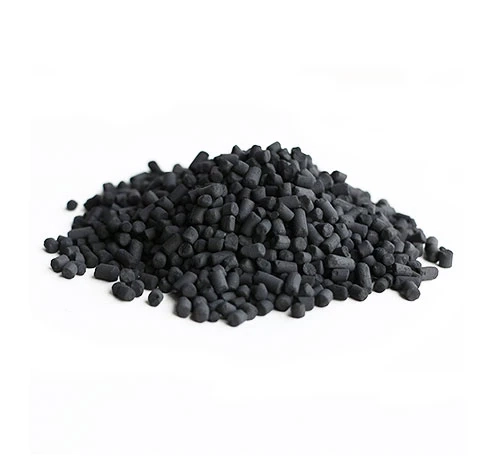Coal-based activated carbon is usually carbonized at a temperature of 350-600°C. In the carbonization process, most of the non-carbon elements-hydrogen and oxygen are first eliminated in the form of gas due to the high temperature decomposition of the raw materials, eliminating the volatile and moisture in the raw materials, and the released elemental carbon atoms are combined into a general term called basic graphite micro The orderly crystallization product of crystals makes the carbon particles form preliminary pores and possesses the structure of the original form of activated carbon.
After the raw material is carbonized, we call it the carbonized material. The carbonized material has a certain adsorption capacity, but the adsorption capacity is extremely low. The iodine adsorption value of the general carbonized material is only about 200mg/g after testing.
Coal-based activated carbon has high strength, well-developed pores, large specific surface area, especially large pore volume, which has unique advantages. Coal-based activated carbon has a strong adsorption capacity for various organic matter in water, free chlorine and harmful gases in the air.bulk activated carbon pellets It is an excellent adsorbent for the deep purification of urban drinking water and is used to remove bacteria and poisonous gases in the air. Coal-based activated carbon has developed pore structure, good chemical stability and mechanical strength, and is an excellent broad-spectrum carbonaceous adsorption material.
For different coal types, the tar formation process ends at about 550°C. According to a large number of laboratory research and industrial production experience, 600℃ is the final carbonization temperature. If the temperature is too low, the carbonized product cannot form sufficient mechanical strength. If the temperature is too high, the graphite microcrystalline structure in the carbonized product will be ordered and reduced. The gap between the crystallites affects the process of activation and pore formation.
Coal-based activated carbon is developed through a series of processes such as carbonization→cooling→activation→washing. activated carbon suppliers It is also called coal-based granular activated carbon. Its appearance is generally black cylindrical activated carbon, amorphous, also known as broken carbon.
Cylindrical activated carbon, also known as columnar carbon, is generally made from powdered raw materials and a binder through kneading, extrusion, and then carbonization and activation. It can also be extruded with powdered activated carbon and a binder. It has a developed pore structure, good adsorption performance, high mechanical strength, easy repeated regeneration, and low cost. It can be used for toxic gas purification, waste gas treatment, industrial and domestic water purification treatment, solvent recovery, etc.



